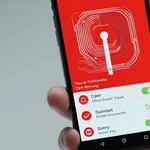
The National Public Data breach represents one of the most consequential cybersecurity incidents in modern history, exposing sensitive personal information affecting hundreds of millions of individuals across North America and revealing critical vulnerabilities in how data brokers operate within an inadequately regulated industry. This comprehensive analysis examines the breach that occurred in December 2023 when cybercriminals gained unauthorized access to a Florida-based background check company’s systems, ultimately compromising approximately 2.9 billion records containing names, Social Security numbers, addresses, phone numbers, email addresses, and family member information spanning decades of personal history. The incident remained largely hidden from public view until April 2024 when a threat actor using the pseudonym USDoD began offering the stolen data for sale on the dark web for $3.5 million, yet the company did not acknowledge the breach to the public until August 2024, leaving victims unaware of their exposure for months. This report examines the origins of National Public Data, the technical vulnerabilities that enabled the breach, the scope and nature of exposed information, the aftermath including legal consequences and bankruptcy, and the systemic implications for data privacy and corporate accountability in the digital age.
Understanding National Public Data: The Business of Data Aggregation
National Public Data, operating under parent company Jerico Pictures, Inc., represents a category of enterprise that most consumers have never heard of despite the profound impact these companies exert over personal information. Founded by Salvatore “Sal” Verini, a Florida-based actor and retired sheriff’s deputy, NPD functioned as a data aggregator specializing in background checks and consumer data services. Rather than collecting information directly from individuals, NPD engaged in the practice of data scraping, systematically harvesting personal information from public records, government databases, financial filings, social media, and various other sources to compile comprehensive dossiers on hundreds of millions of Americans. The company’s website promised instant results for investigators, background check services, data resellers, mobile applications, and other clients, providing access to databases containing criminal records, civil case information, employment history, educational background, political affiliations from voter records, real estate holdings, and other deeply personal details.
The business model of National Public Data exemplifies how data brokers operate largely invisible to the individuals whose information they collect and sell. Unlike traditional companies that interact directly with customers who knowingly provide their information, NPD accumulated data on people who had never consented to or even been aware of such collection. The individuals whose information was stored in NPD’s databases did not create accounts with the company, did not sign terms of service, and in most cases had no knowledge that their personal histories were being compiled into searchable databases offered for commercial resale. This practice illuminates a critical distinction in the data brokerage industry between legally permissible activities and those that raise fundamental ethical questions about privacy, consent, and personal autonomy. NPD collected information that was technically “public” in the sense that it appeared in court records, property records, voter registration files, and similar sources, yet the aggregation and sale of this information at massive scale represented a transformation of how such data could be weaponized and exploited.
The company operated through various platforms and interfaces, with nationalpublicdata.com serving as its primary publicly-facing website while maintaining connections to other properties including recordscheck.net. NPD’s revenue model depended on purchases of bulk data from other sources and fees charged to clients accessing their databases, with company filings eventually revealing net profits of $475,526 in 2022 and $865,149 in 2023. The company employed fewer than twenty-five employees, suggesting an operation that was lightweight in staffing but substantial in the volume and sensitivity of data it held. This disconnect between the minimal resources devoted to operating the company and the massive scope of data under management would prove consequential when security inevitably failed, as the company lacked the infrastructure, expertise, and resources typical of large enterprises handling sensitive information.
Timeline and Mechanics of the National Public Data Breach
The compromise of National Public Data’s systems did not occur in a single moment of dramatic infiltration but rather unfolded across several months beginning in December 2023, with the company’s understanding and public acknowledgment of the incident lagging significantly behind the actual criminal activity. According to NPD’s own subsequent statement, a malicious actor achieved initial unauthorized access to their systems in late December 2023, exploiting security lapses that would later be traced to vulnerabilities in the company’s sister site, RecordCheck.net. The breach was not detected immediately, and the company did not discover the security incident until approximately December 30, 2023, yet even this discovery failed to trigger immediate notification to affected individuals or swift remediation efforts.
The technical vulnerability that enabled the initial compromise centered on a catastrophic security failure at RecordCheck.net, an NPD-related background search service. Investigations by cybersecurity journalist Brian Krebs revealed that RecordCheck.net had inadvertently published an archive file named “members.zip” that contained plaintext administrator passwords, usernames, and source code for various components of the site. This archive was freely accessible from the website’s homepage, available to anyone who knew where to look or could stumble upon it through routine scanning of web resources. The exposed credentials included passwords that many RecordCheck.net users had never changed from their initial six-character assignments, demonstrating a cascade of security failures spanning from management’s failure to enforce strong password policies to users’ failure to prioritize account security. The source code contained in the archive had been created by a web development firm based in Lahore, Pakistan, and the credentials within matched passwords previously exposed in unrelated data breaches, further indicating that RecordCheck.net had long operated with inadequate security practices.
These compromised credentials provided the foothold that threat actors needed to gain access to NPD’s broader systems and the vast databases they contained. With valid administrative credentials in hand, the threat actor operating under the moniker USDoD was able to access NPD’s most sensitive repositories containing the aggregated personal information of hundreds of millions of people. The initial intrusion likely occurred around late December 2023, though the exact timing remains unclear given the company’s opacity regarding its investigation. By April 2024, approximately four months after the initial compromise, USDoD had successfully exfiltrated a massive volume of data and began offering it for sale on dark web marketplaces. The threat actor posted the stolen database on Breached.vc and other underground forums under the designation “National Public Data,” claiming the dataset contained 2.9 billion records and requesting $3.5 million from potential buyers.
The company did not acknowledge the breach publicly until August 12, 2024, following weeks of widespread media coverage and after class-action lawsuits had already been filed. This represented a delay of approximately seven to eight months between the initial discovery and public acknowledgment, during which time victims remained entirely unaware of their exposure and the potential risks to their identities and finances. In many cases, individuals first learned of the breach not from NPD but from identity theft protection services to which they subscribed, which detected their information appearing in breach databases. This delayed notification violated basic principles of responsible disclosure and left millions of people defenseless against identity theft during a critical window when early notification could have enabled proactive protective measures.
The timeline also reveals that NPD’s parent company, Jerico Pictures, Inc., showed remarkable passivity in the face of an unprecedented security crisis. When questioned by the U.S. House Committee on Oversight and Accountability in August 2024, the company responded with minimal transparency, offering only boilerplate language about investigating the matter rather than providing substantive information about the breach’s scope, nature, or company response. The House Committee specifically noted that NPD’s website “has yet to provide a substantive explanation about the self-described security incident,” highlighting the company’s unwillingness to engage meaningfully with the public and policymakers regarding the catastrophe it had caused.
Data Exposed: Scope, Scale, and Composition
The characterization of the National Public Data breach as exposing “2.9 billion records” requires careful parsing, as cybersecurity experts have noted that this headline figure represents rows of data rather than unique individuals, a distinction that fundamentally shapes understanding of the breach’s scope. Threat actor USDoD’s initial claim referenced 2.9 billion rows of data contained within a 277.1 gigabyte uncompressed database offering, and this number became the figure repeated across media outlets and legal filings despite its imprecision regarding actual affected individuals. Security researcher Troy Hunt, who operates the Have I Been Pwned breach tracking service, analyzed the leaked data and found that only approximately 31 percent of rows contained unique Social Security numbers, suggesting that the actual number of unique individuals affected was substantially lower than the headline figure would indicate. Hunt’s extrapolation suggested that approximately 899 million individuals with unique Social Security numbers may have been exposed rather than 2.9 billion, though the exact figure remains difficult to determine given the heterogeneous and partially inaccurate nature of the data.
Despite these qualifications about the precise number of affected individuals, the scope of the breach remains staggering and represents an unprecedented exposure of sensitive personal information. Official estimates suggest that up to 170 million individuals across the United States, United Kingdom, and Canada had their data exposed, though some sources cite figures as high as 300 million people. The breach affected not merely ordinary citizens but also included public figures, elected officials, CEOs and startup founders, law enforcement personnel, teachers, doctors, and government employees. The comprehensiveness of NPD’s database and the breadth of exposed records meant that virtually anyone who had engaged in basic adult activities during the preceding decades was likely included, as people who held jobs, voted, paid taxes, bought property, or used credit were systematically captured within NPD’s data collection apparatus.
The specific data elements exposed in the breach paint a portrait of comprehensive personal exposure that extends far beyond typical identity information. The compromised records included full names, Social Security numbers, mailing addresses, email addresses, and phone numbers as core elements. Beyond these standard personally identifiable information categories, the database contained historical addresses spanning sometimes three decades of residence history, allowing criminals to identify patterns in victims’ locations and potentially enabling authentication bypass by providing answers to security questions that reference previous residences. The breach also exposed alternative names, including nicknames and former or maiden names stored in separate database fields, which could be leveraged by social engineers to make phishing and smishing attacks more convincing and personalized. Similarly troubling were multiple alternative dates of birth fields that, while not uniformly populated, indicated NPD’s tolerance for data inaccuracy and the inclusion of speculative or alternative information about individuals.
One of the most disturbing aspects of the exposed data was the inclusion of family member information, with the database containing names and identifying details of relatives of the individuals in the primary records. This family relationship data extended to deceased relatives, with some records including information about family members who had been deceased for nearly two decades, according to analysis by vx-underground cybersecurity researchers. The inclusion of family member data created unique vulnerabilities for sophisticated social engineering attacks and deepfake impersonation schemes, as criminals could convincingly reference victims’ family members in targeted fraud attempts or use family relationship information for phishing schemes that would appear to come from trusted sources. Analysis by security researchers also revealed that the database contained extensive employment and salary history information, educational background details, political affiliation data extracted from voter records, criminal and civil case information, and real estate holdings. Some records also included partial Social Security numbers, dates of birth, phone numbers (both personal and work-related), and other data points sufficient for comprehensive identity reconstruction and exploitation.
The quality and accuracy of the data within the breach proved highly variable, with researchers noting that much of the information was outdated, duplicated, or inaccurate. Many records pertained to individuals who were deceased, with Atlas Data Privacy Corp. researchers finding that the average age of individuals in the database was seventy years old and that approximately two million records were associated with people whose date of birth would make them over 120 years old in 2024. This preponderance of data on deceased individuals reduced the practical utility for identity theft purposes but complicated accurate counting of unique affected individuals and raised questions about NPD’s data quality assurance practices. The database also notably did not contain information from individuals who had utilized data opt-out services, suggesting that NPD at least nominally respected opt-out requests, though this distinction meant that individuals who had proactively attempted to protect their privacy still found their data exposed through the security failure.
The Threat Actor: USDoD and the Attribution Question
The breach was claimed and executed by a cybercriminal operating under the pseudonym USDoD, whose profile emerged over time through analysis of dark web marketplaces and cyber intelligence investigations. The account offering NPD data first appeared on Breached.vc in April 2024, with USDoD claiming responsibility for the compromise and requesting $3.5 million for the dataset. USDoD’s posting included tantalizing samples of the data designed to convince potential buyers of the database’s legitimacy and comprehensiveness. Cybersecurity researchers at vx-underground, an educational website focused on cybersecurity threats, confirmed after examining the samples that the information in the 277.1 gigabyte database was real and accurate. By July 2024, the dataset that USDoD had attempted to sell appeared on BreachForums for free download, making it immediately accessible to any criminal with dark web access and apparently satisfying USDoD’s objective regardless of whether a buyer had been secured.
USDoD’s background and motivation reflect patterns common among prolific cybercriminals targeting large databases and critical infrastructure. In February 2022, threat intelligence reports highlighted USDoD as potentially having breached multiple U.S. defense databases and painted him as a pro-Russian threat actor, though USDoD himself disputed these characterizations. He claimed that collaborations with Russian individuals or groups were based on personal or business connections rather than political motivations and pointed to an AI project named “Tulip” as an example of technical collaboration. Prior to adopting the USDoD moniker, the individual had operated as “NetSec” on RaidForums and had conducted a “#RaidAgainstTheUS campaign” targeting the U.S. Army and defense contractors, establishing a pattern of ambitious claims and targeting of high-value objectives.
USDoD’s modus operandi heavily relied on social engineering rather than sophisticated technical exploits, with the cybercriminal gaining access to high-profile entities including NATO Cyber Center Defense and CEPOL by impersonating executives and using deceptive techniques to gain membership or access to restricted systems. This emphasis on social engineering and credential theft—tactics that proved effective in the NPD case given that sister company RecordCheck.net had publicly exposed administrative credentials—suggested that USDoD was an opportunist capable of adapting to whatever vulnerabilities organizations presented rather than exclusively a sophisticated technical penetrator. His stated motivations intertwined personal vendettas with a love for challenging cyber exploits and a expressed goal of establishing a private company to sell military intelligence on the dark web.
In a development that altered the trajectory of the case, USDoD’s identity was reportedly revealed following investigative work and doxing by cybersecurity firm CrowdStrike, whom USDoD had previously targeted. The individual behind the USDoD pseudonym was identified as Luan G., a thirty-three-year-old from Minas Gerais, Brazil, operating under what may have been an additional pseudonym of EquationCorp. Luan reportedly confessed to his involvement following the doxing, indicating that other cybersecurity groups had already identified him before CrowdStrike’s public exposure. In a surprising statement to cybersecurity journalists, Luan expressed a desire to leave cybercrime behind and contribute positively to Brazil, acknowledging that it was time to take responsibility for his actions. The legal ramifications remain uncertain given Brazil’s policy of not extraditing its citizens to other countries, though Luan could potentially face prosecution within Brazil itself.

Cybersecurity Failures and Technical Vulnerabilities
The National Public Data breach traced its origins to a cascade of catastrophic failures in basic cybersecurity practices spanning from network architecture to password management and third-party risk governance. The foundational vulnerability resided in NPD’s sister site, RecordCheck.net, which operated with such minimal security controls that it published its own administrative credentials and source code in a publicly accessible archive file. This failure to implement basic operational security measures—such as restricting access to sensitive files, using encrypted storage for credentials, or implementing access controls—indicated an organization for which cybersecurity was not a priority despite the sensitivity of the information under its control.
The specific technical failures encompassed multiple fundamental lapses that security practitioners would expect any organization handling sensitive data to have already remediated. NPD exhibited a lack of strong password policies that allowed and apparently encouraged users to retain default six-character passwords assigned during account creation rather than forcing regular changes to complex, unique credentials. The company failed to implement multi-factor authentication on administrative dashboards, meaning that stolen credentials alone were sufficient for complete system access without additional verification steps. NPD’s use of weak encryption standards for backup archives meant that even data that had been encrypted was protected with algorithms insufficient against modern computational capacity. The company appears to have failed to patch known vulnerabilities in Apache servers and other infrastructure components, leaving publicly documented security flaws unaddressed that attackers could exploit.
Beyond these foundational security failures, NPD demonstrated catastrophic lapses in third-party risk management and network segmentation practices. The company had allowed a sister organization to operate with independent security practices without enforcing minimum security standards, and when RecordCheck.net’s security failed, the compromised credentials provided direct access to NPD’s core systems and databases. The breach analysis suggested that NPD had misconfigured cloud storage buckets with public access permissions, representing another elementary mistake that should have been caught through basic security auditing and infrastructure scanning. The company had implemented network segmentation poorly if at all, allowing an attacker with administrative credentials from one system to rapidly access highly sensitive data repositories without encountering segmentation controls that would have contained the breach.
From an operational perspective, NPD had failed to implement continuous monitoring that would have detected unauthorized data exfiltration occurring over months. A properly configured security operations center with network monitoring tools would have identified the massive transfer of 277 gigabytes of data leaving NPD’s systems, yet the company appears to have possessed no such visibility. Similarly absent were adequate logging and audit trail mechanisms that would have documented who had accessed what data and when, making forensic analysis and breach containment significantly more difficult. The company had evidently not conducted regular security assessments or penetration testing that would have identified these vulnerabilities before they could be exploited by motivated threat actors.
The forensic analysis conducted after the breach’s disclosure revealed that the attack pattern matched what would be expected from an actor who had obtained valid credentials rather than performed sophisticated technical penetration. This suggested that had NPD implemented basic identity and access management controls, regularly reviewed who possessed administrative access, and immediately rotated credentials when systems were compromised, the damage could potentially have been limited. The failure to implement these controls despite the regulatory environment increasingly requiring such practices indicated either willful negligence or profound organizational incompetence regarding cybersecurity obligations.
Impact and Consequences: The Human Cost of Data Exposure
The exposure of personal information at the scale achieved by the National Public Data breach creates sustained risks across multiple dimensions affecting victims’ financial security, personal privacy, physical safety, and psychological wellbeing. With Social Security numbers exposed for hundreds of millions of individuals, the risk of identity theft reaches unprecedented proportions, as criminals now possess the core data elements needed to open fraudulent credit accounts, apply for loans in victims’ names, obtain credit cards, or establish financial accounts without authorization. The inclusion of names, addresses, and dates of birth—elements frequently used in security questions and authentication protocols—dramatically increases the likelihood that criminals can bypass verification systems designed to prevent unauthorized access to existing accounts. With this information publicly available in dark web criminal communities, the exposure is permanent and will enable fraud attempts indefinitely into the future.
The exposure of phone numbers and email addresses contained in the breach will facilitate a dramatic increase in phishing and smishing attacks, as criminals can craft highly targeted social engineering campaigns that reference victims’ legitimate addresses, family members, and other contextual details extracted from the exposed database. The inclusion of family member names and alternative identities enables particularly sophisticated phishing schemes in which attackers impersonate trusted relatives or associates with knowledge of the victim’s personal history, dramatically increasing the likelihood of successful social engineering attacks. The historical address data spanning decades enables criminals to research victims’ movements and patterns, potentially enabling physical threats, address fraud, and sophisticated targeted scams based on demonstrated knowledge of the victim’s life.
For individuals with compromised Social Security numbers, the Federal Trade Commission and security experts recommend aggressive protective measures including placing fraud alerts on credit reports, implementing full credit freezes with all three major credit bureaus, monitoring financial accounts intensively, filing taxes early before criminals can file fraudulent returns using stolen SSNs, and in many cases enrolling in identity theft protection services. These protective measures impose genuine costs and burdens on victims who bear no responsibility for the breach, requiring time investment in contacting government agencies, credit bureaus, financial institutions, and service providers, as well as financial costs for some protective services not offered for free. Even with these protective measures in place, residual risk persists indefinitely, as exposed Social Security numbers can be traded among criminals and reused in future fraud schemes virtually forever.
The psychological impact of widespread data breaches cannot be quantified but should not be discounted, as millions of individuals face the ongoing knowledge that their most sensitive information is available to criminals on the dark web and cannot be changed or recalled. The Social Security Administration itself has acknowledged that Social Security numbers cannot be retired or replaced even after compromise, meaning victims must navigate perpetual risk management strategies rather than resolving the exposure through some form of remediation. The breach has been characterized by consumer privacy advocates as a “five-alarm wake-up call” for Americans regarding the vulnerability of their personal information and the inadequacy of existing data protection frameworks.
Legal Consequences and Regulatory Action
The National Public Data breach triggered extensive legal action spanning multiple jurisdictions and levels of government, establishing this incident as a focal point for data privacy litigation and regulatory enforcement. California resident Christopher Hofmann filed an initial class-action lawsuit against NPD in the U.S. District Court for the Southern District of Florida after receiving notification from his identity theft protection service on July 24, 2024, that his data had been exposed in the breach and leaked to the dark web. Hofmann’s complaint alleged that NPD had committed negligence, unjust enrichment, and breaches of fiduciary duty through its failure to properly secure sensitive personal information and failure to notify victims in a timely manner. The lawsuit specifically cited NPD’s negligent and careless acts and omissions that resulted in unencrypted, unredacted personally identifiable information being compromised, published, and sold on the dark web due to NPD’s utter failure to protect customers’ sensitive data.
The lawsuit’s demands extended beyond monetary compensation for the plaintiffs to include specific mandates for operational change at NPD. Hofmann requested that NPD purge all breached personally identifiable information, encrypt all data going forward, implement data segmentation practices, scan its databases for additional vulnerabilities, launch a comprehensive threat-management program, undergo annual cybersecurity framework evaluations through third-party auditors through 2034, and provide monetary relief to affected class members. These demands articulated a vision of how a company responsible for such a breach should reform its practices to prevent recurrence and better protect the sensitive information it maintained.
Beyond the initial class action suit, numerous additional lawsuits were filed across multiple jurisdictions, with legal databases indicating over twenty distinct lawsuits had been filed against NPD and its parent company Jerico Pictures, Inc. by late 2024. The proliferation of litigation reflected both the geographic scope of the breach and the multiple legal theories upon which victims could base claims, including negligence, breach of contract, violation of consumer protection statutes, and violation of state privacy laws. The litigation landscape was further complicated by the fact that NPD had not operated under licensing or registration requirements in many states, meaning that some regulatory frameworks did not directly address the company’s conduct.
Regulatory agencies also moved to enforce consumer protection laws and data privacy statutes against NPD. The Federal Trade Commission initiated investigations into the breach and reportedly considered whether to bring enforcement actions for unfair or deceptive practices related to NPD’s data collection and security practices. More than twenty states’ attorneys general either filed legal claims or were actively investigating the breach, according to documents filed in bankruptcy court, and several states announced civil penalties or enforcement actions. The California Privacy Protection Agency brought a specific enforcement action against Jerico Pictures, Inc., d/b/a National Public Data, for failing to register as a data broker and pay annual fees required under California’s Delete Act, resulting in a $46,000 fine assessed in February 2025. This enforcement action highlighted how NPD’s regulatory noncompliance compounded its security failures, as the company had not even registered with California’s privacy agency as required by law.
Bankruptcy and Corporate Dissolution
The legal and regulatory pressures resulting from the breach combined with mounting costs for investigating the incident, responding to law enforcement inquiries, and addressing anticipated class-action settlements to overwhelm NPD’s financial position. In October 2024, only two months after the breach became public, Jerico Pictures, Inc., the parent company of National Public Data, filed for Chapter 11 bankruptcy protection in the U.S. Bankruptcy Court for the Southern District of Florida. In its initial bankruptcy filing, company owner Salvatore Verini stated that the company faced substantial uncertainty due to regulatory challenges from the Federal Trade Commission and more than twenty states threatening civil penalties for data breaches, and that it was unlikely to be able to repay its debtors or address its anticipated liabilities and class-action lawsuits, including paying for credit monitoring for hundreds of millions of potentially impacted individuals.
The financial condition revealed in bankruptcy filings exposed the inadequacy of the company’s resources to address the consequences of its failures. The company disclosed that it had fewer than $75,000 in total assets despite holding databases valued by the owner at $1 million for Social Security numbers alone. The company’s insurance provider had declined coverage following the data breach, eliminating a potential source of funds for settlements and legal defense. NPD’s disclosed revenues in recent years—$475,526 in net profits during 2022 and $865,149 in 2023—suggested a modest operation that had inadequately invested in security or built sufficient reserves to weather the consequences of a security failure. Much of the company’s revenue had been directed to purchasing bulk data and compensating Salvatore Verini as the company’s sole operator, leaving minimal resources for reinvestment in security infrastructure or compliance programs.
The bankruptcy filing was initially dismissed by the court, suggesting that the bankruptcy process would not shield the company or its assets from liability. However, the existence of the bankruptcy case highlighted the practical reality that victims of the breach were unlikely to recover meaningful compensation through judgment or settlement, as the company possessed insufficient assets to pay even a small fraction of potential claims across hundreds of millions of affected individuals. This situation created a perverse incentive structure in which a company could cause catastrophic damage affecting unprecedented numbers of people yet face minimal financial consequences because the company had been operated with inadequate resources and profitability to build reserves for worst-case scenarios.

Reactivation and Ongoing Concerns
Despite the breach, bankruptcy filing, and widespread public outcry, National Public Data resumed operations under new ownership in 2025 through Perfect Privacy LLC, a Florida-based firm that acquired and relaunched the NPD website. The reactivation of NPD without substantive security reforms or transparency improvements represented a troubling development indicating how lightly regulated the data brokerage industry remains. According to reporting from cybersecurity researchers, users could still search and access the same personal data that had been compromised and exposed in the breach, raising alarm bells that the change in ownership had not been accompanied by meaningful improvements in data protection or transparency practices. This situation exemplified how liability could potentially be evaded through corporate restructuring and ownership changes without altering operational risks or security practices, as the demands articulated in the Hofmann lawsuit applied to the prior entity and operator rather than the new ownership structure.
Data Privacy Regulation and Industry Reform
The National Public Data breach catalyzed broader discussions about the need for comprehensive federal data privacy legislation and stricter regulation of data brokers operating within the United States. At the time of the breach, data brokers operated in a largely unregulated environment, with only partial and inconsistent state-level regulations governing their collection, use, and security practices. California’s Delete Act and the California Consumer Privacy Act represented among the most comprehensive state-level frameworks for regulating data brokers, requiring registration with the California Privacy Protection Agency and providing consumers with rights to access, delete, and limit use of their personal information. However, most states lacked comparable comprehensive regulations, and the federal government had not enacted comprehensive data privacy legislation applicable to all data brokers.
In response to the breach and broader concerns about data broker practices, Senator Kirsten Gillibrand introduced the Data Protection Act of 2024, which would establish a dedicated federal Data Protection Agency with authority to regulate data aggregators, oversee data practices, enforce privacy rights, and conduct investigations into high-risk data practices. The proposed legislation articulated a vision for federal oversight of the data brokerage industry analogous to regulatory frameworks governing financial institutions and healthcare providers. However, as of the current date, comprehensive federal data privacy legislation applicable to all data brokers has not been enacted, leaving significant regulatory gaps that the NPD incident exposed.
Lessons and Recommendations
The National Public Data breach illuminates multiple critical failures in corporate governance, cybersecurity practice, regulatory oversight, and personal data protection that warrant examination and reform at multiple institutional levels. At the organizational level, the breach demonstrated the catastrophic consequences of failing to implement foundational cybersecurity controls including strong password policies, multi-factor authentication, encryption, network segmentation, continuous monitoring, and regular security assessment. These were not novel or cutting-edge security measures but rather standard practices that should have been implemented at any organization handling sensitive personal information. The breach underscored the imperative for data brokers and other organizations maintaining large databases of personal information to invest adequately in security infrastructure, maintain current expertise, and prioritize information security within corporate strategy and resource allocation.
The regulatory environment must adapt to address vulnerabilities exposed by the NPD incident. The Cyber Incident Reporting for Critical Infrastructure Act requires covered entities to report cyber incidents within specified timeframes, but NPD was not classified as critical infrastructure and therefore was not subject to these reporting requirements, allowing the company to remain silent about the breach for months after discovery. Expansion of breach notification requirements to data brokers and other entities maintaining large databases of sensitive personal information would ensure more rapid disclosure and potentially limit the window of exposure during which criminals can exploit compromised data without awareness or detection. Federal data privacy legislation should establish minimum security standards for all entities processing significant volumes of personal information, with periodic auditing and compliance certification requirements.
More fundamentally, the prevalence and scale of data breaches across the economy suggest that current approaches to personal data protection have become inadequate for the digital age. The continued dependence on Social Security numbers as a primary identifier for financial transactions, credit extension, and identity verification creates a system-wide vulnerability, as exposure of Social Security numbers becomes progressively more damaging and consequential as more breaches occur. Security experts increasingly advocate for moving toward alternative identity verification systems less dependent on static identifiers that cannot be changed or replaced following compromise. Comprehensive privacy legislation should establish consumer rights to know what data organizations maintain about them, to delete such data upon request, and to limit the use and sharing of sensitive personal information without clear consent.
Beyond the Breach: Safeguarding Our National Public Data
The National Public Data breach stands as one of the most consequential cybersecurity incidents in contemporary history, exposing sensitive personal information of up to 170 million individuals across North America and revealing critical vulnerabilities in how data brokers operate within an inadequately regulated industry. The breach resulted from a cascade of elementary cybersecurity failures spanning from public exposure of administrative credentials on a sister company website to the absence of basic controls including strong password policies, multi-factor authentication, data encryption, network segmentation, and continuous monitoring. The eight-month delay between initial discovery and public acknowledgment left victims defenseless during a critical window when early notification could have enabled protective measures. The subsequent bankruptcy of the company, coupled with its reactivation under new ownership without substantive security reforms, illustrates how the current regulatory environment allows companies to cause catastrophic damage affecting hundreds of millions of people while facing minimal meaningful consequences.
The broader implications of the NPD breach extend beyond the specific company to the data brokerage industry as a whole and fundamental questions about personal privacy protection in the digital age. The incident demonstrates that market forces and corporate self-regulation are insufficient to ensure adequate security practices when companies operate with minimal resources, inadequate expertise, and minimal accountability to the individuals whose data they collect and maintain. Federal data privacy legislation establishing comprehensive security standards, breach notification requirements, consumer rights, and regulatory oversight is essential to protect against similar incidents in the future and to shift the balance of power toward individuals seeking to maintain control over their personal information. Until such legislation is enacted and data brokers are required to maintain security standards comparable to those in other regulated industries, millions of individuals will remain vulnerable to identity theft, financial fraud, and other harms arising from the exposure of their most sensitive personal information to criminal actors operating on the dark web.
Protect Your Digital Life with Activate Security
Get 14 powerful security tools in one comprehensive suite. VPN, antivirus, password manager, dark web monitoring, and more.
Get Protected Now





